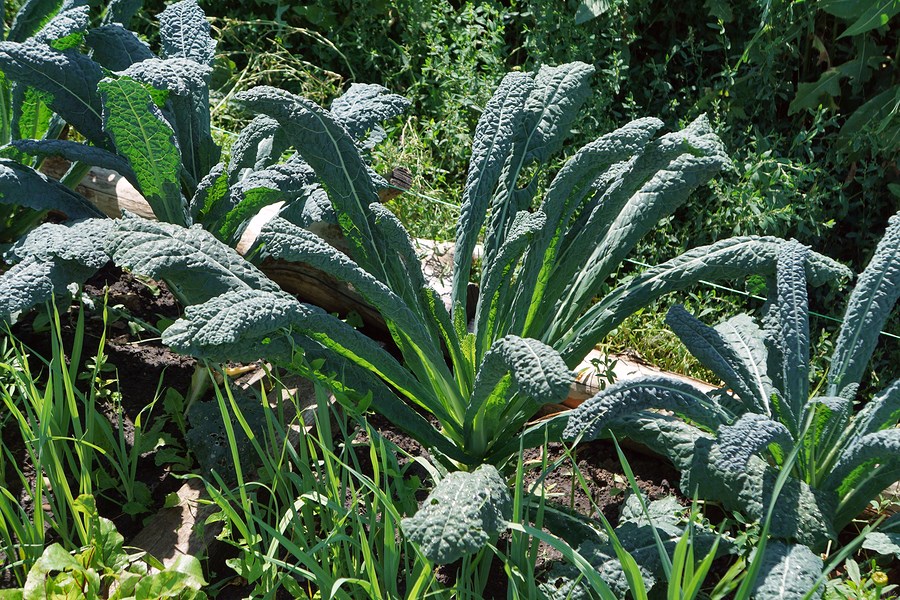We have an early snow again. The below normal temperatures following a wet summer made for a challenging gardening season. Tender crops had to be harvested earlier. Root crops could wait through a few early frosts, and so could members of the cabbage family, including kale. My dinosaur kale was my last crop to be harvested after several frosts. Frost actually sweetens kale.
Dinosaur kale (Brassica oleracea palmifolia) goes by a variety of names: lacinato kale, Tuscan kale, black kale, cavolo nero, and a few more. It has dark green, long, narrow leaves with a bumpy texture that may be interpreted as dinosaur skin. There are several varieties of kale ranging from curly to flat, but I selected dinosaur kale for the name, hoping to entice my vegetable wary grandson to try it.
Kale is easy to grow in our gardens. It is a cool season crop, which was obvious this summer when it languished in hot weather and produced most of its leaves once it cooled down. It is best to start it indoors about six weeks before setting out by the end of May. You can grow kale in a pot or in the garden. If growing in a pot choose a light-coloured pot to limit heating up the soil, and move the pot into shade during hot weather. Provide full sun at other times. Hot weather can make the leaves tougher and slightly bitter.
Like other members of the cabbage family, kale is susceptible to flea beetles, especially when it is young, and cabbage worms later in the season. Insecticidal soap will control flea beetles when used vigilantly as needed. The use of row cover as soon as the crop is planted is very effective. Cabbage worms are easy to pick off on the open plants, and a spray of Bacillus thuringiensis, available locally, is effective.
Kale prefers a slightly acidic, loamy, well-drained but moisture retentive soil. Regular watering and side dressing with compost will keep your kale growing. Do not use a high nitrogen fertilizer.
Once the plants are about ten inches tall, you can begin harvesting the outside leaves. At the end of the growing season the entire plant can be cut. With a variety of vegetables to harvest during the summer I like to leave my kale until after frost, when it is sweeter.
This was my first year growing kale, but it is so easy and so delicious, not to mention nutritious, that it will become a staple in my garden.




